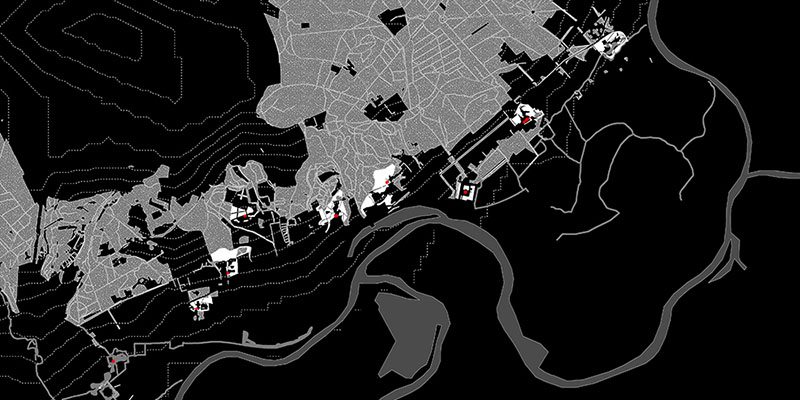Downloads
DOI:
https://doi.org/10.7480/rius.4.1367Abstract
Despite its widespread availability there is evidence that GIS is underused in the realm of landscape design research. Though recognized as a useful tool for mapping and planning, the potential of GIS is often still underutilized due to a lack of awareness and prejudice. This paper explores some concepts of GIS-based analysis which link to the very heart of landscape architecture in a natural and intuitive way. Hence the possibility to break down barriers of using GIS in landscape architecture this paper aims to put forward some characteristic principles of study and practice that can be made operational via GIS while cultivating spatial intelligence in landscape design through exploiting its powerful integrating, analytical and graphical capacities. In this respect educational and research institutions have an important role to play, they must take the lead in knowledge acquisition on GIS-applications and passing it on, contributing to the academic underpinning and development of a digital culture in landscape architecture.
How to Cite
Published
Issue
Section
License
Copyright (c) 2016 Steffen Nijhuis

This work is licensed under a Creative Commons Attribution 4.0 International License.
References
Bell, S. (1993). Elements of Visual Design in the Landscape. London: E & FN Spon.
Colquhoun, A. (1991). ‘Composition versus the project’, in: idem, Modernity and the Classical Tradition. Architectural Essays, 1980-87. Cambridge: MIT Press.
Cross, N. (2006). Designerly ways of knowing. London: Birkhauser.
De Jong, T. (2006) Context Analysis. Delft University of Technology.
Drummond, W.J. & French, S.P. (2008). ‘The future of GIS in planning. Converging technologies and diverging Interests’, Journal of the American Planning Association 74(2); 161-174.
Evert, K.J. et al. (eds.) (2010). Encyclopedic Dictionary of Landscape and Urban Planning. London: Springer-Verlag.
Gardner, H. (1999). Multiple Intelligences. The Theory in Practice. Basic Books.
Göçmen, Z.A. & Ventura, S.J. (2010). ‘Barriers to GIS use in planning’, Journal of the American Planning Association 76(2); 172-183.
Lukez, P. (2007). Suburban Transformations. Princeton Architectural Press.
Marot, S. (1995). ‘The landscape as alternative’, in: K. Vandermarliere (ed.) Het Landschap / The Landscape. Four International Landscape Designers (pp 9-36). Antwerp: De Singel.
Nijhuis, S. (2013). ‘Principles of landscape architecture’, in: E. Farina & S. Nijhuis (eds.) Flowscapes. Exploring landscape infrastructures (pp 52-61). Madrid: Mairea Libros Publishers.
Nijhuis, S. (2014). ‘GIS-based landscape design research. Exploring aspects of visibility in landscape architectonic compositions’, in: D.J. Lee, E. Dias, & H. Scholten (eds.) Geodesign by Integrating Design and Geospatial Sciences (GeoJournal Library 111) (pp 193-217). Heidelberg: Springer verlag.
Nijhuis, S. (2016). GIS-based landscape design research: Stourhead landscape garden as a case study. A+BE | Architecture And The Built Environment, 5(13), 1-338. doi:10.7480/abe.2015.13
Nijhuis, S. (2016). ‘GIS-toepassingen in onderzoek naar buitenplaatsenlandschappen’, Bulletin KNOB 3; 149-166.
Prominski, M. (2004). Landschaft entwerfen: Einführung in die Theorie aktueller Landschaftsarchitektur. Reimer Verlag
Steenbergen, C.M., Mihl H., Reh W. (2002). ‘Introduction; Design Research, Research by Design’, in: C.M. Steenbergen, et al. (eds.) Architectural design and composition (pp 12-25). Bussum: Thoth publishers.
Steenbergen, C.M. & Reh, W. (2003). Architecture and landscape. The Design Experiment of the Great European Gardens and Landscapes. Basel, Boston, Berlin: Birkhäuser.
Stiles, R. (1994). ‘Landscape theory: a missing link between landscape planning and landscape design?’, Landscape and Urban Planning 30; 139-149.
Thompson, I. (2008). Ecology, Community and Delight. Sources of values in landscape architecture. London & New York: Taylor & Francis.
Zonneveld, I.S. (1995). Land Ecology. An Introduction to Landscape Ecology as a base for Land Evaluation, Land Management and Conservation. Amsterdam: SPB Academic Publishers.




